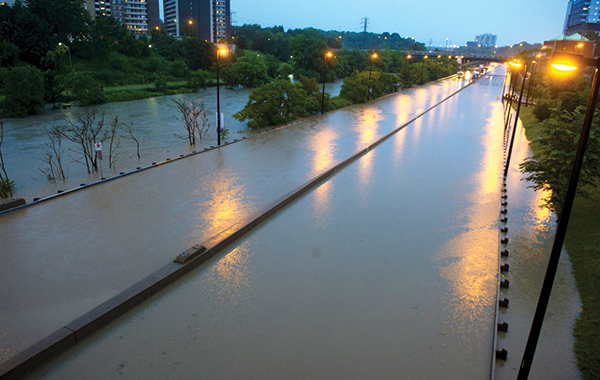
Dave Gray
Hurricane season has hit: How you and your clients can protect yourself
Renovation ContractorIn mid-October, 1954, the remnants of tropical Hurricane Hazel settled over Toronto, dumping 3.5 inches of rain on an already soggy city. Rivers across the area flooded, knocking out bridges and more.
In mid-October, 1954, the remnants of tropical Hurricane Hazel settled over Toronto, dumping 3.5 inches of rain on an already soggy city. Rivers across the area flooded, knocking out bridges and more. The most devastating damage happening on a street called Raymore Dr., built on the floodplain of the Humber River. Fourteen homes were washed away, many with people trapped inside. Thirty-five people from the street died. Many lessons were learned from this disaster including, don’t build on a flood plain.
While we typically think of hurricanes affecting the southern U.S., the largest storms often have impacts reaching Canada, particularly the Atlantic provinces. If you’re in the path of potentially devastating storm, FirstOnSite Restoration shares these 10 tips for you and your clients to protect your properties.
- Board up your windows. Broken windows leave your property exposed to wind, rain, and flying objects. Plywood is an extremely effective and relatively inexpensive way to protect your windows against hurricane-force winds. Other options: storm shutters and impact-resistant windows.
- Secure loose outdoor objects. Any unsecured item can become a deadly projectile in high winds – garbage bins, potted plants, lawn furniture, gardening equipment, toys. Move these indoors, or tie them down, to avoid injury to people, or damage to your property or your neighbours’.
- Check your roof. Cracks or leaks in a roof can lead to water damage during a hurricane. Loose shingles can also become projectiles.
- Trim your trees. Falling trees pose a risk to both your property and neighbouring properties. Reduce this risk by removing any dead trees or branches now.
- Protect your property against flooding. If your area is vulnerable to storm surges or overflowing rivers, this step is especially important. Sandbags piled at least half a metre high form a protective barrier against floodwaters.
- Install surge protectors. Hurricanes often cause power outages, followed by power surges when electricity is restored. Surge protectors help protect your electronic devices from voltage spikes caused by power surges.
- Back up electronic devices. This step is critical for businesses. Data should be stored off-site, in case physical computers or devices are damaged or inaccessible due to a hurricane.
- Create an inventory of your property. Knowing exactly what items are in your home or business is vital when filing an insurance claim. In addition to making a written list of contents, you can take photos or videos, or use an inventory app.
- Ensure you have adequate insurance coverage. Check your policy to make sure you’re covered for damage caused by rain or wind. This generally includes damage caused by flying debris or falling branches or trees, or damage when water enters through openings caused by high winds.
- Stay informed. When a hurricane develops, landfall can often be predicted 24–48 hours in advance – providing a window of time for last-minute preparations, and if necessary, evacuation.


